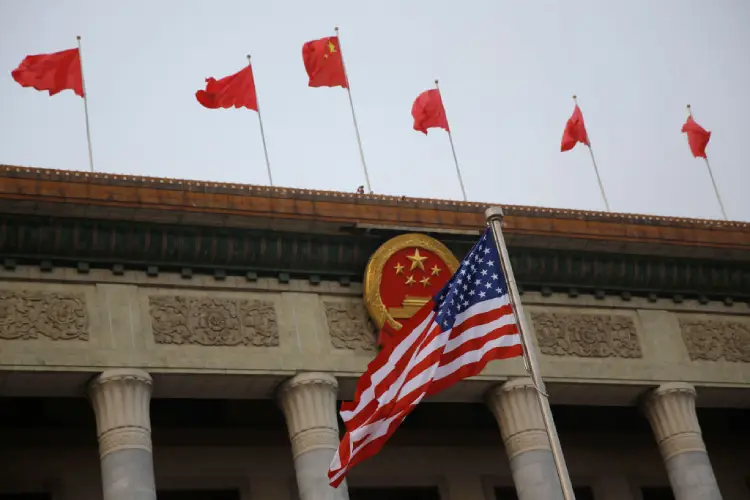
Despite growing geopolitical tensions and technological competition, collaboration between AI researchers in the US and China has grown over the past decade. But data from Stanford University’s latest AI Index Report shows that in 2021, the number of AI papers co-authored by researchers in the US and China fell for the first time since at least 2010. This is likely the result of the US’ controversial ‘China Initiative’, designed to protect scientific research from espionage, which was scrapped last month.

US and China AI collaboration dips
As geopolitical tensions have mounted between the US and China in the last decade, technology has become a key focus of competition between the two great powers. But until recently, this had not dissuaded AI researchers from collaborating with their international peers, says Michael Sellitto, deputy director of the Stanford Institute for Human-centered Artificial Intelligence (HAI).
“China and the US are two major sources of AI talent and naturally, there will be many Chinese researchers whom US researchers would want to work with, and vice versa as researchers would want to work with the best in the fields,” he explains. “Moreover, major US tech companies like Microsoft have research teams in China, and Chinese firms like Baidu have research teams in the US as well.”
In 2021 however, the total number of AI research papers co-authored by China and US-based researchers declined by 6% compared to the previous year.
Sellitto attributes this to the effects of state-level tensions and the US Department of Justice’s controversial China Initiative. Launched in 2018 to crack down on intellectual property theft and espionage, the initiative saw a number of scientists prosecuted for failing to disclose ties to Chinese peers. Last month, the DoJ scrapped the China Initiative, amid complaints that it had "created a climate of fear among Asian Americans".
These factors seem to have “cast a pall over collaborations involving Chinese scholars and institutions for some researchers, particularly those of Chinese descent," says Sellitto.
Scientific collaboration can be "an opportunity to increase mutual understanding and decrease tensions," says Sellitto. "For example, the United States and Soviet Union promoted academic and cultural exchanges during the Cold World."
Attempts to dissuade such collaboration is unlikely to prevent AI research from crossing between the countries, he adds. "Most academic AI research is intended to be published openly; even those working in the industry demand the right to publish," Sellitto says. "So, in large part, knowledge produced would be made available to Chinese researchers, even if there were no US-China collaborations involved in a particular project."
China's growing AI research output
Collaboration with the US may be in decline, but China’s AI researchers have been working hard, the AI Index Report reveals. Between 2019 and 2021, the number of AI-related patent applications in China increased three-fold. In the last 12 years, Chinese academics have filed a total of 87,343 AI patent applications, more than four times the figure in the US.
Only a fraction of these applications have been successful: just 2% of AI-related patent applications submitted by China-based researchers have been granted as of 2021, compared to more than 50% of those submitted by US researchers.
A similar trend can be seen in AI conference papers. Up to the end of 2021, almost a third of the world’s AI conference papers had been published in China, compared to the 17% for the US and 19% in Europe. But the ranking of citations is reversed, with US AI conference research papers making up a third of all citations, while Chinese papers make up just 15% of citations.
China's prodigious output of conference papers reflects the state's concerted efforts to drive AI research forward, says Daniel Zhang, policy research manager at Stanford Institute for HAI. “For many years, the government incentivised researchers to publish more broadly in a variety of conference venues and journals, so this showed up as a rise in the absolute number of papers being published by Chinese researchers,” he says.
There is some indication that the quality of China's research output is improving, he says, with a slight increase in citations in recent years. However, he adds, this may reflect changing citation behaviours by Chinese researchers. “For instance, this could predominantly be Chinese researchers citing other Chinese researchers, or it could be more shared across other countries."






